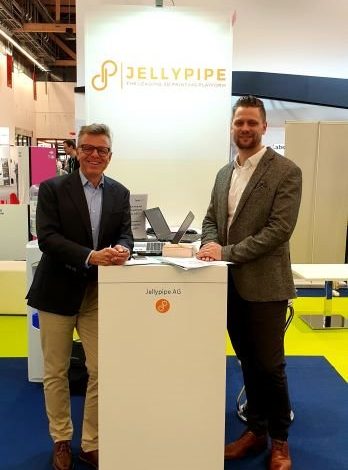
Contents
What is there to report from this year’s Formnext?
Formnext 2019 took place at Messe Frankfurt from November 19th to 22nd. With 852 exhibitors (compared to 632 in 2018) and 34,532 trade visitors (2018: 26,919), Formnext again achieved record numbers in 2019. In addition to these 34532 visitors, 925 conference participants and 852 exhibitors.
Due to this strong growth, Formnext 2019 took place in more modern and architecturally more sophisticated exhibition halls than Formnext 2018. The exhibition area was 53039 square kilometers.
Innovations at Formnext 2019
In addition to new additive processes, numerous new 3D printing materials were presented this year. The same applies to software solutions. However, numerous industry-specific solutions were also presented.
New 3D printers and materials
Trump with an innovative flow concept
The German manufacturer Trumpf presented a 3D printer that is particularly suitable for the medical sector at Formnext. What is special about this printer, the TruPrint 2000, is the fact that Trumpf has revised the flow concept. In the TruPrint 2000, the shielding gas now flows particularly evenly through the system from the back to the front. According to Trumpf, this promotes the quality of the 3D printed parts.
New materials from Clariant
The Swiss chemical group Clariant also used Formnext to present its newly developed materials for 3D printing. This also included Exolit flame-retardant and glass fiber-reinforced PA6/66-GF20 FR LS, which meets the requirements of EN 45545-2, NFPA 130 (ASTM E162, ASTM E662) and SMP 800-C. This material offers ideal mechanical properties. At the same time, PA6/66-GF20 FR LS ensures excellent flame resistance, low smoke development and low toxicity in the event of fire.
Stratasys with solution for the railway industry
At a press conference as part of Formnext, Stratasys presented a 3D printing innovation that could benefit rail commuters in particular. The reason for this is the fact that passenger trains often break down because components for repairs are missing. The reason lies not least in the long service life of the trains (35 to 45 years on average). This makes the procurement of spare parts very difficult. It is precisely at this point (older components, in small quantities) that 3D printing offers the ideal solution.
Stratasys developed the Antero 800NA material specifically for this need. In addition, Stratasys also demonstrated the material ULTEM 9085 on its Fortus 3D printer, which we also offer you at 3D Activation.
Read more about current 3D printing trends in our blog.
To the blog overview


